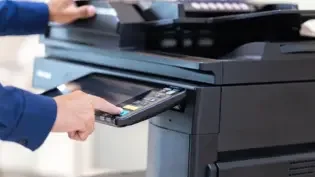How to Use a Small Business Line of Credit
By: Biz2Credit.com

A business line of credit can be a powerful asset, especially if business owners learn how to use them efficiently. So what is a business line of credit? And, how does it differ from a conventional loan? Funding options for small businesses can get very specialized. Learning how to use a business line of credit can be a life-line for a small business and may even be the difference between success and failure.
What is a Small Business Line of Credit?
A small business line of credit, sometimes referred to as an “LOC”, is similar to a credit card in some ways. It allows a business owner to establish a pre-determined amount of fund, or credit limit to draw on when needed. This is different from a conventional loan where the borrower receives all the borrowed amounts in one lump sum.
Using a line of credit, the borrower only pays interest on the outstanding amounts borrowed, avoiding interest payments on the amount that are not used immediately. Once established, drawing funds is quick (usually as easy as writing a check).
This can give owners a sense of calm, as it guarantees cash on hand whenever necessary, to be used for anything from repairs to the purchase of new equipment, to making new hires. If you have time gaps between capital needs and revenue realization, a line of credit can help you ride out the cycle until accounts payable have been received.
What are the best places to get a Small Business Line of Credit?
For small business owners, the good news is that there is a lot of competition among lenders who are looking to offer a line of credit. These include national, regional and local banks, credit unions and online lenders and financial technology firms.
Obtaining a LOC depends on factors such as the owner’s personal assets, consistent earnings, excellent capital position, cash flow statements, and multiple sources of repayment. Generally, lenders will put a cap on the amount of funds you can draw on, and you’ll only have to pay interest on the outstanding principal.
Line of Credit Application Checklist
- Understand your needs and amount of credit you need. Just keep in mind that a LOC is a shorter-term type of loans and so the loan amounts are generally lower than conventional term loans.
- When do you need the loan? Plan ahead, get a line of credit before you need one
- Check the approval guidelines before applying or use an online lender to help understand your credit profile. Your bank is usually the best place to go for a LOC if you have a long, solid history. However, if you have less-than-perfect credit, you may wish to explore your options. Remember, each time a lender does an inquiry against your credit report; it can weaken your credit.
- As with any type of small business loan options, know the cost of borrowing. Always compare APR, fees and other features. This is where online lenders can give you an advantage. Once again, if you have a good relationship with your bank, try them first; chances are you will get your best deal with your own bank.
Unsecured Small Business Lines of Credit: Traditional Banks vs. Online Lenders – What is the Difference?
This one gets a bit confusing for some; mainly because almost every bank has a web site where you can apply for a small business loan or line of credit. Every financial institution appears to be an “online lender” these days. However, traditional lenders such as banks have different requirements, regulations and standards versus online lenders. As a rule of thumb (but not always), banks will have more strict lending criteria and offer the lowest rates on borrowing and online lenders will have lower requirements and offer slightly higher borrowing costs.
Unsecured Small Business Line of Credit with Traditional Banks
We have already discussed some of the main differences between banks and online lenders in granting access to lines of credit to your small business. Now, let’s explore some of the nuances and what to expect when applying for a LOC at your bank.
Consolidating all financial activities – So you have been granted a conditional approval at your bank for an attractive line of credit for your business, great; but what are the conditions? Banks will frequently require your small business to consolidate all your financial activities with that bank. This will include checking and payroll accounts, operating accounts, etc. Not only will the bank make more profits by compelling you to do all your banking with them, it’s also a way to monitor the health of your business.
LOC Loan Amounts and Limits – Banks will generally establish credit lines for small businesses starting at $10,000 (many have a $25,000 minimum), up to $100,000. Of course this is a general rule and banks may offer higher limits, but there are generally a small percentage of borrowers who qualify for the higher LOC amounts.
| Loan limits | Interest rates (published) | Terms | Fees | |
| Bank of America | $25,000 | 4.75% | Revolving with annual renewal | Upfront and renewal fees for amounts up to $100,000 are $150; $250 for amounts above $100,000 and up to and including $250,000 and 0.5% of the line amount for amounts above $250,000 |
| Wells Fargo | $5,000-$100,000 | Prime +1.75% | Revolving | 0 for lines of credit less than $10,000; $95 for lines of credit between $10,000 to $25,000; $175 for lines of credit over $25,000 |
| PNC | $20,000- $100,000 | Variable, based on the Prime Rate | Annual review and renewal | $175 (annual) |
Cost of Borrowing – Interest rates on lines of credit can vary greatly depending on credit with many banks offering rates as low as Prime +1.75%.
Collateral requirements – In many cases banks will grant near minimum limits for an unsecured LOC unless the company and applicant have outstanding credit profiles. Reading the small print shows the extent and possible limitations at a glance. Higher limit LOC’s without an exceptional credit profile will usually require some type of hard-asset collateral, despite it being an “unsecured line”.
Traditional Bank Loan Application Process – Surprisingly, applying for a small business line of credit at a traditional lending institution such as a bank is done on paper. Many banks, even larger institutions have not yet digitized their lending operations. This usually translates into lengthy application and approval processes.
Unsecured Small Business Line of Credit with an Online Lender
Originally referred to as alternative lenders, online lenders have become competitive sources of small business financing, especially in the popular area of small business line of credit products. Online lenders were originally alternatives to big banks. During the financial crisis, the big banks virtually stopped lending to small business despite getting billions of dollars in government assistance and government-backed guarantees to do so. To fill the need left by the large banks neglect of the small business lending marketplace, an entire industry of online lenders emerged to fill the void.
Requirements
To qualify for a commercial line of credit from an online lender, you’ll typically need to show that you have:
- Credit score 580+
- 12 months in business
- $10,000 in average monthly revenues
- Ability to pledge short-term assets (like accounts receivable)
- No recent bankruptcies, foreclosures, or tax liens
Loan Limits – Online lenders make extensive use of technology to manage underwriting decisions. In addition, they will require access to your electronic banking data to make near real-time assessments of your credit worthiness. This allows the lender to automatically adjust the lending limits accordingly. This may at first seem obtrusive to a small business owner, but it actually provides solid feedback to the business owner about their business and finances. However, most loans for LOC’s are similar to traditional banks between $10,000-$100,000.
Unintended benefits of tech-based online lenders.
Unlike traditional banks, online lenders utilize more objective criteria from prospective borrowers. Biz2Credit’s Chief Risk Officer, Venkatesh Bala, explains how online lenders are changing the rules and making credit more accessible to small businesses:
“By its very nature, lending involves asymmetric information that is detrimental to both borrowers and lenders. Prospective borrowers who may be good credit risks struggle to establish themselves as such in the eyes of lenders, while the latter have historically relied upon the judgment of experienced underwriters to separate “good” risks from those are not.
Even the best underwriters make mistakes, which can have significant negative consequences – “good” prospects get turned down, while “bad” prospects get credit, leading to costly write-downs.
The inefficiencies in the matching process between borrowers and lenders can be traced back to a lack of reliable real-time information which currently resides in silos, some with the lender and some with the borrower and their bank.
Open information exchange enables bidirectional, real-time information flows, so that, instead of having to rely solely on the judgment of underwriters, credit access can be made on more objective grounds, based upon verifiable, transparent and mutually agreed upon cash flow and other financial information.
Prospective borrowers can signal that they are good borrowers by opting in to share their GL information. In turn, lenders can use this information to become better at identifying good prospects, and devising adjustable “smart” contracts based on the now available real-time information to de-risk their own portfolios. “
Cost of Borrowing with online lenders – APR’s tend to be slightly higher with online lenders on average. Mainly, this is due to the fact that online lenders tend to be lenders of last resort for borrowers who have marginal credit and have been turned-down by traditional banks; therefore, they are lending to businesses with higher credit risk than banks will tolerate. To offset the higher risk, online lenders may have higher APR’s and sometimes additional fees.
Collateral Requirements – Online lenders may indeed ask for hard asset collateral pledges, but more often they will go a step further and ask for a comprehensive lien on all business assets. The extent to which an online lender encumbers the borrower’s assets will be determined by the borrower’s credit rating.
If the lender requires a blanket lien against assets, this may inhibit the borrower from access to gaining further credit.
When is the Best Time to Apply for a Business Line of Credit?
Knowing a few simple tips can mean the difference in costs of borrowing, and the amount of capital you can borrow.
- When you have a strong credit rating – If you know your credit rating (your personal credit score mostly) may go up or down in the next few months, plan accordingly. Most small business lines of credit are reviewed annually. So make your application when you have your best foot forward. You are likely to get a lower rate and better terms with a better credit rating.
- When business is strongest – Like credit score, you may wish to apply for your small business line of credit when business in trending up.
- Apply before you need it – Most business experts advise small business owners to treat a business line of credit somewhat like an insurance policy or a piece of equipment. Apply for and using a business line of credit before it’s needed will ensure it’s there when you need it.
- Build history of repayment in good times – following-up on the above, it may be wise to draw upon your line of credit, even though it’s not necessary and repay it promptly to establish a history. Doing so may also qualify you for increased limits and lower rates.
What You May Not Know About a Small Business Line of Credit
Small business owners should carefully review their business line of credit agreements. Even though you may follow some of the above steps for best practices, be aware that lenders usually have the right to rescind a line of credit at almost any time without notice to the borrower. Or, a lender may reduce the upper limit of the amount you can borrow. Business owners who are presently, or may be facing potential headwinds in on-hand cash, may wish to draw their lines of credit in advance. It may be better to draw the funds if a crisis is looming and accept the cost of interest payments than to endure a cash crisis without means to draw additional capital.












